Dogs Can Recognize Words
We would think that because dogs are domestic animals, they are not intelligent. Quite on the contrary, dogs can recognize up to 250 words, count up to 5 and can complete simple mathematical equations. There is a very famous border collie, whose name is Chaser, that has learned more than 1,000 words.


On average, studies have shown that dogs can learn up to 250 words. Nonetheless, the average dog can learn up to 165 words. Dogs best understand words they can link to objects or behaviors — like sit, walk or car — rather than abstract concepts. According to Dr. Pamela Reid, dogs also have an easier time learning if you talk to them in single words.
Dogs Are Intelligent
Scientists consider that dogs are as intelligent as a young child of two years. This conclusion has been reached after the findings of a language development test, that reveals that dogs can learn up to 165 expressions, including signals and gestures. Regarding basic arithmetic, dogs are more intelligent than kids between 3 to 4 years.


According to Stanley Coren, a canine expert and professor emeritus at the University of British Columbia considers that the smartest dogs are border collies, poodles, and German shepherds, in that order. Coren also said that “those breeds have been created recently compared with other dog breeds and may be smarter in part because we’ve trained and bred them to be so”,
Service Dogs Are Trained To Poop On Command
If you have wondered how, when and where service dogs go to do their business, here you will find the answer. They are trained to go to the bathroom only on command. When these dogs begin their training they’re taught to associate a specific word with going to the bathroom.
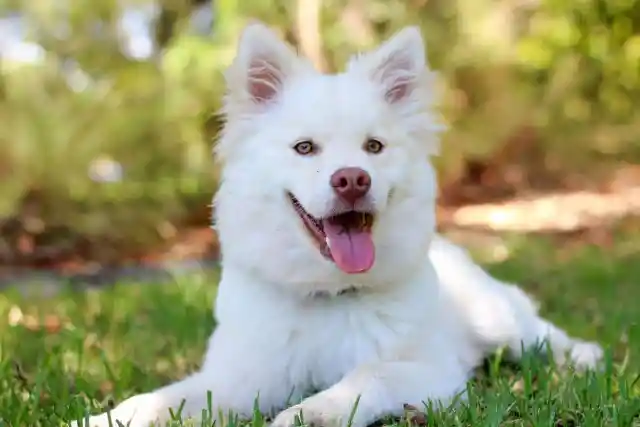

With a well-trained dog, a blind handler can give the command to go, and pet the dog once it has found a spot and started to go. Dogs go into different stances depending on whether they’re peeing or pooping, and by running a hand down the dog’s back, the handler can figure out what’s going on. Once the dog is finished, the handler just leans down with their plastic bag and can find the poop pretty easily.
The Basenji Does Not Bark
The Basenji is a breed of hunting dog that was bred from stock that originated in Central Africa and is placed in the hound group by kennel clubs. Basenjis, like dingoes, New Guinea singing dogs and some other breeds of dog, come into estrus only once annually


Another interesting fact of this breed of dogs is that they do not have a distinctive bark. On the contrary, they produce a kind of yodel sound that is called a baroo, due to its unusual shaper larynx. For this reason, the Basenji has been nicknamed as the barkless dog.
Dogs Have Better Ear
Did you know that dogs tilt their heads to hear better distant sounds? Dogs have twice as many ear muscles like humans, and it’s estimated that they can hear sounds four times better than us. There are several facts to add to this. For example, dogs have more than a dozen muscles in each ear specifically for movement allowing them to tilt, turn, raise, and lower them.


Guardian and working breeds such as the Collie or German Shepherd were developed to watch for trouble. It’s not likely their hearing differs much from other breeds, but these breeds certainly may choose to listen more carefully than other breeds. Dogs can hear at higher frequencies than our range. Some dog whistles take advantage of this range by creating a sound only dogs can hear.
Dogs Have Three Eyelids
All dogs are born with a third eyelid known as the nictitating membrane. This is completely normal in all breeds of dogs. Nonetheless, if you ever watch your dog and you can actually see its third eyelid, go see a vet immediately.


According to Debora Friedman, doctor of veterinary medicine says that there are four functions of the third eyelid in dogs. First, it acts as a “windshield-washer” for the cornea, secondly, the gland of the third eyelid produces about one-third of the dog’s tears. The third eyelid contains lymphoid tissue which acts as a lymph node and produces antibodies to fight infection. Finally, it protects the cornea from injury.
30% of Dalmatians are Deaf
Dalmatians have a serious genetic disposition to be deaf from one ear. As has been found, almost 30% of all dalmatians in the world are deaf from one of its ears. Deafness was not recognized by early breeders, so the breed was thought to be unintelligent. Even after recognizing the problem as a genetic fault, breeders did not understand the dogs’ nature, and deafness in Dalmatians continues to be a frequent problem.


Nowadays, researchers have found that deafness in albino and piebald animals is caused by the absence of mature melanocytes in the inner ear. The condition is also common in other canine breeds that share a genetic propensity for light pigmentation. This includes, but is not limited to Bull Terriers, Dogo Argentinos, Poodles, Boxers, Border Collies and Great Danes.
Spots On Their Tongue
We were always led to believe that those dogs that had a spot on their tongue were part Chow, but that is not entirely true. Labs, Shepherds, and Golden Retrievers are also known to have spots on their tongues. In fact, over 30 breeds are prone to spotted tongues. Dogs have dark spots on their tongue due to extra pigmentation, just like freckles or birthmarks on humans.


Dark spots on your dog’s tongue or skin do not mean they are part Chow. Having some Chow in any mixed breed dog is a possibility since they’re one of the oldest breeds known to man, but there are also 38 other breeds known for having spotted tongues. Dark spots on the tongue are common among a wide variety of dog breeds. If you were hoping to narrow down your dog’s genetic makeup based on their tongue alone you’re not going to get very far.
First Mammal On Orbit
In 1957, the first animal to orbit the earth was a Russian stray dog by the name of Laika. The Soviet Union launched Sputnik 2 on November 3, 1957, and aboard the vessel was the little Laika who became the first animal to orbit Earth. She was chosen from 10 other canine candidates because of her even temperament. To get her used to the small confines of Sputnik 2 the scientists kept her in progressively smaller cages for up to 20 days. The close confinement caused her to stop urinating or defecating.


Sputnik 2 caused a lot of debate about testing on animals across the globe. There were protests held outside the United Nations and New York. One of the scientists who worked on Sputnik later stated:
“Work with animals is a source of suffering to all of us. We treat them like babies who cannot speak. The more time passes, the more I’m sorry about it. We shouldn’t have done it… We did not learn enough from this mission to justify the death of the dog”.
Sheltered Dogs
According to several animal shelters, and contrary to popular belief, not all dogs surrendered to shelters are mutts. It’s estimated that 25 to 30 percent of dogs in the shelter system are purebreds. Of the 9,000 animals dying in America’s shelters each day, over a quarter are the types of dogs fetching high prices via retail outlets.


If you find yourself yearning for a purebred dog or puppy, there’s nothing wrong with that. I suggest a couple of things: Research the breed to be sure the temperament of the breed matches your expectations. Then, search for one to rescue.
Dogs Urine
Do you always wonder why the grass where your female dog pees gets burnt? That is because the nitrogen in your dog’s urine is what causes lawn burns, and fertilized yards tend to suffer more because of their higher than usual nitrogen levels. Since female dogs squat when they urinate it pools in a collected area. That pooling of the urine in one concentrated area is what can lead to dead grass.


High concentrations of nitrogen in dog urine is what kills the grass. Urine consists mainly of water and urea, a form of nitrogen. And when our dogs urinate that excess nitrogen is deposited onto the grass. And while a little bit of nitrogen is good for grass too much will cause damage. When a high amount of nitrogen is deposited in a single spot it can kill the grass — much like putting a concentrated amount of fertilizer in the same location.
Poop Stops
If your dog takes a very long time to poop, there may be a reason for that, it is not only just to annoy the owners. Whether you believe it or not, there is a scientific explanation for their behavior. Research suggests that dogs poop according to the Earth’s magnetic field. German and Czech researchers looked into how and where dogs defecate, and they’re suggesting they seem to be doing it with a certain poop compass in mind.


The researchers took 37 different breeds of dogs (70 dogs total) on a variety of outings over a two year period and watched how and where the dogs did their business. They analyzed 1,893 poop stops and 5,582 pee breaks during those two years. The study found that dogs seem to favor facing north or south when pooping. When peeing they found that males prefer to face northwest, and the female dogs seemed to stick with facing north or south.
Pee Stops
Did you ever wonder why your dog wants to stop all the time when you’re out taking him for a walk? But what is your dog finding out when he sniffs where other dogs have marked? There is a lot of information to gather, and it’s all very interesting to your dog. By checking the pee-mail, a dog can determine the gender of the dogs who came before him and whether they’re spayed or neutered. If there’s a female in heat, he’ll know that, too.
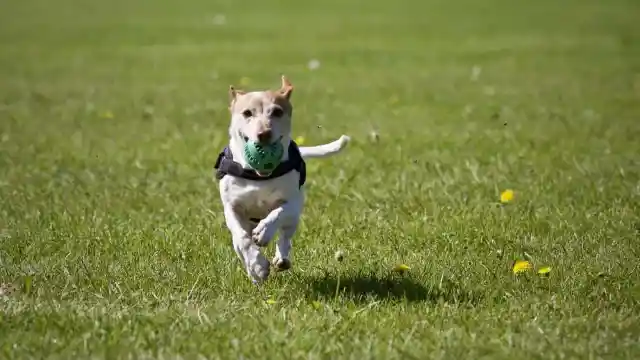
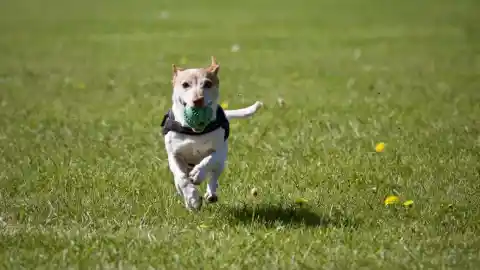
According to a study by Dr. Anneke Lisberg, intact males with high social order are most likely to overmark, or pee over another dog’s scent, while females tend to mark nearby, as opposed to on top of, the urine mark left by another dog. Dr. Lisberg’s work also suggests that female dogs are interested in both male and female pee-mail, while male dogs are primarily interested in what other male dogs lifted on.
Smell
According to scientists, dogs’ sense of smell overpowers our own by orders of magnitude, it’s 10,000 to 100,000 times as acute. James Walker, former director of the Sensory Research Institute at Florida State University, who, with several colleagues, came up with that jaw-dropping estimate during a rigorously designed, oft-cited study


If you make the analogy to vision, what you and I can see at a third of a mile, a dog could see more than 3,000 miles away and still see as well. Alexandra Horowitz, a dog-cognition researcher at Barnard College, writes in her book “Inside of a dog” that while we might notice if our coffee has had a teaspoon of sugar added to it, a dog could detect a teaspoon of sugar in a million gallons of water.
Detect Seizures
A new study has shown that family dogs can often sense when a child has an impending epileptic seizure. Adam Kirton, a pediatric neurologist with Alberta Children’s Hospital at the University of Calgary in Alberta writes that “it’s a remarkable ability that may develop spontaneously in some dogs and has recently been documented in dogs living with epileptic adults”.


He further explains that “these seizure-alerting dogs may reduce the frequency of epileptic seizures, therefore improving the families’ quality of life”. Kirton got his information from telephone interviews with 45 families, all having children with epilepsy, all ranging in age from 7 years old to 18 years old; 39% had dogs in the family for at least one year. The parents reported seizure-related behaviors regarding their family dog and their children.
Greyhounds Speed
Greyhound owners and adoption groups consider Greyhounds wonderful pets. Greyhounds are quiet, gentle and loyal to owners, and they are very loving. Whether a Greyhound will enjoy the company of other small animals, such as cats, depends on the individual dog’s personality. Greyhounds will typically chase small animals; those lacking a high ‘prey drive’ will be able to coexist happily with toy dog breeds and/or cats. Many owners describe their Greyhounds as “45-mile-per-hour couch potatoes”.
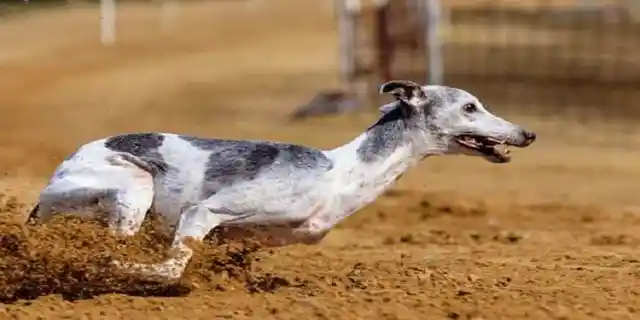
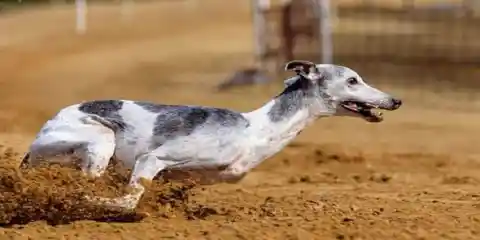
Greyhound racing is an organized, competitive sport in which greyhounds are raced around a track. There are two forms of greyhound racing, track racing (normally around an oval track) and coursing. In many countries, greyhound racing is purely amateur and solely for enjoyment. In other countries, particularly Australia, Ireland, Macau, Mexico, Spain, the UK and the US, greyhound racing is part of the gambling industry and similar to horse racing – although less profitable.
Lying
Our domestication of dogs has led to a level of communication unseen with other mammals. They’ve been shown to pick up on many of our gestures, from pointing fingers to watching for eye contact. Our dogs are so in tune with our gestures and cues, and they pick up more then we give them credit for. Since they’re so adept at reading us it begs the question – can your dog tell when you’re lying? A new study has found that they’re dogs are not only watching us for instructions and cues – they’re judging us as well.
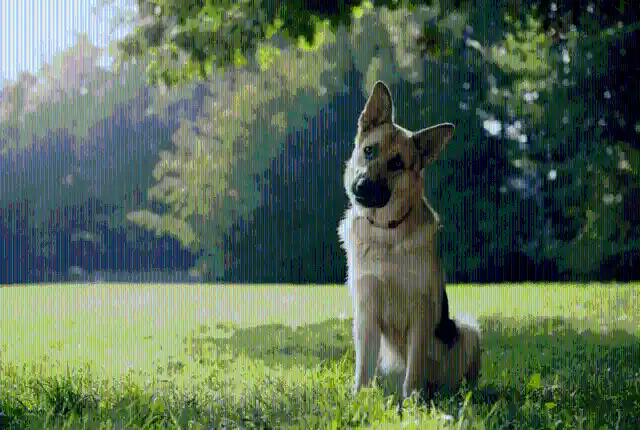
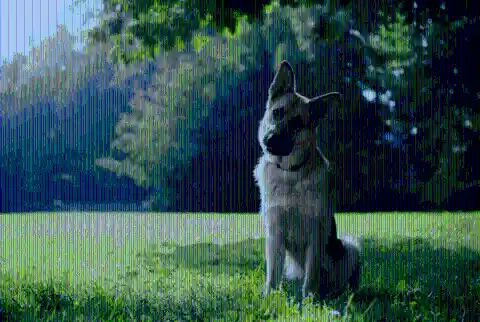
The researchers studied 34 dogs; each was presented with two containers. One was filled with treats and the other was empty. The research was conducted in three rounds. In round one, the human participant would point to the treat-filled jar and show the dog what was inside which the dogs would happily eat. In round two the human did the same thing except he pointed to the empty container and revealed the lack of treats inside which left the dogs looking rather confused. In round three the human repeated what had been done in round one – pointing to the treat-filled jar. This time, however, most of the dogs didn’t believe him and decided not to trust his instructions.
Night Vision
As it turns out our canine companions can see pretty well in the dark, but not quite as well as our feline friends. When it comes to night vision dogs have a few anatomical advantages over humans, and it’s estimated that they can see things in a light that’s five times dimmer than what we can see. Your dog can see better in the dark than you can because of the way their eyes are structured.
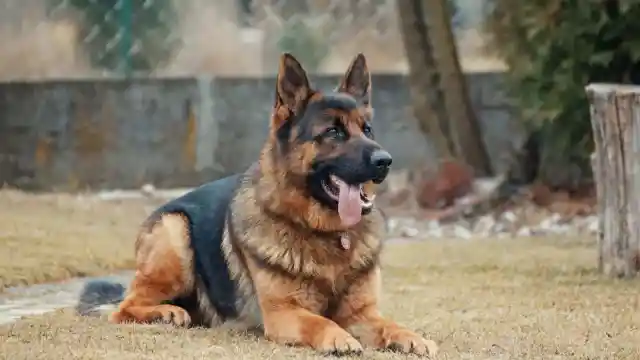

The tapetum lucidum is a layer of tissue in the eyes of many animals have, including dogs and cats. It lies between the animals’ retina and optic nerve and acts as a mirror. It greatly increases the amount of visible light available to the photoreceptors. The photoreceptors are specialized cells in our eyes that respond to light. When light shines into the eye of an animal with a tapetum the pupil appears to glow, and that’s what causes their eyes to glow in the dark.
Owners Bed
No matter how much time and effort you spend on picking out the most comfortable and cozy doggy bed for your four-legged best friend, chances are he will still prefer to cuddle up against you in your bed. As it turns out, there are a variety of different reasons dogs want to get in your bed. Regardless of breed, usually our pooch’s desire to join us for cuddles stems from their natural instinct originating from their pack mentality.


Since most dogs consider their pet parents as pack members or part of their family it is natural for them to want to sleep next to you. Another common reason dogs enjoy getting into bed with their owners is for the cuddles and petting. It is something that they truly enjoy and thus petting your dog after he gets into the bed with you is rewarding to him and conditions him to want to repeat the behavior. Short-haired dogs might have ulterior motives for hopping onto the bed at night – not just for the cuddles but also for some warmth, especially during the colder seasons.
Detect Cancer
In an interesting new study, trained dogs have demonstrated they can detect the presence of prostate cancer in a person by smelling their urine with 98% accuracy. The lead author of the paper, Dr. Gianluigi Taverna says: “This study gives us a standardized method of diagnosis that is reproducible, low cost and non-invasive”. Dr. Taverna is chief of the prostatic diseases unit at the Humanitas Research Hospital in Milan, Italy.


The study involved over 900 participants and divided them into a prostate cancer group of about 360 men and a control group who did not have prostate cancer, which consisted of 540 men. The control group was tested to ensure they didn’t have any other form of cancer. Two young German Shepherds were trained for 5 months and once ready they simply smelled the urine and gave their reaction to the presence of scents that indicate prostate cancer. The results were astonishingly good with one of the dogs detecting to 100% accuracy the patients who had prostate cancer and to 98% accuracy the people from the control group who did not have prostate cancer.
Protection
It seems that we, humans, are not the only ones who keep dogs as pets. In the wild, baboons have been seen keeping dogs as pets for protection. They groom the dogs, and the dogs happily eat, travel with, and sleep among the baboons. The baboons’ dogs also chase off other wild dog packs.


Natural breeds sometimes referred to as “pariah dogs,” are found in many parts of the world, often on the outskirts of human settlements. They tend to be mid-sized animals with short hair and pointy ears. Often tan or brownish, they resemble Australian dingos in size and shape. They are called “natural breeds” because the dogs pick their own mates and are not subjected to the arbitrary aesthetic rules of human overlords.
Oldest Dog
Most dogs seem to generally share a common lifespan, bringing us roughly 10-13 of the best years we’ve ever had. But some breeds make the list for having an abnormally long life expectancy. In fact, there are records of dogs living well past 20-years-old. The records show that the longest-lived dog was an Australian Cattle Dog named Bluey who lived to be 29.


The list of the breeds of dogs who live the longest is the following: chihuahuas have a lifespan of between 15 to 20 years, Yorkshire Terriers also live up to 20 years, and some Pomeranians dogs have lived up to 16 years. Beagles are considered to be one of the best dogs for children, with their docile nature but active lifestyle. Beagles also live around 12-15 years.
Sweat
Many dogs have a corn chip smell coming from their feet. It’s known as “Frito feet“, and although it’s a bit strange it is completely normal. One common theory is that the corn chip smell on a dog’s paws is caused by excess corn in their diet. And although a healthy diet is always important it’s not the cause of that corn chip smell on your dog’s feet. Here’s the real reason your dog’s feet smell like Fritos.


That corn chip smell is caused by natural bacteria that end up on your dog’s feet. It’s natural, normal, and fairly common. Dog feet are a thriving host for bacteria, mostly Proteus or Pseudomonas. Both of these common bacteria give off a yeasty type of smell. Humans sweat glands are distributed over much of the body, but dogs only sweat from their paws. And since there’s not a lot of air circulation moving in between your dog’s toes that moisture leads to a build-up of bacteria.
Snore
There are several reasons that might cause your dog to snore, including environmental and physical. Some dogs are born with excess tissue around their neck and throat; this tissue can interfere with a dog’s breathing under certain circumstances. If your dog is overweight, they may also be carrying extra skin and body tissue around their neck. This extra body weight can cause the upper airway to close. Congestion in a dog’s nasal passages can also cause snoring.


Congestion can be caused by allergies, a cold, pneumonia, or environmental factors like secondhand smoke or smog. Even household cleaners and air fresheners may cause allergies. Secondhand smoke is an irritant to a dog’s respiratory system and can lead to snoring problems. If your dog has or is prone to allergies, some allergens can cause the air passages to narrow, which results in snoring. Anything that causes a dog’s airway to constrict or can obstruct it can lead to snoring.
Stress
Is your dog going grey around the muzzle? Just like with humans there are a couple of different reasons as to why some dogs go grey early while others don’t grey much at all. The two major reasons why dogs go grey early are due to stress and genetics. Dogs with high levels of psychological stress or anxiety have been found to grey early, and the cellular stress that causes grey hairs has a genetic component in dogs.


There are two types of greying in dogs. Geriatric greying is the greying that’s associated with the aging process, the same one that happens to humans, and starts in the dog’s muzzle. There’s another type of greying that certain breeds go through called progressive greying. It’s caused by a progressive greying gene that causes their coats to turn grey or silver. This type of progressive greying is attributed to chromosome 25, though the gene itself has not been found.
Chihuahuas
The molera on a chihuahua’s head can best be described as a “soft spot” or hole in the top of the chihuahua’s skull where the skeletal structure has not fused. Similar to a fontanelle in human babies, the parietal and frontal bones of the head have not yet joined together. A chihuahua puppy will have a molera, but as he reaches maturity, the molera may or may not fuse depending on the size, genetics, skeletal structure of the dog.


If your chihuahua has a molera, be gentle with them and exercise caution. You want to reduce the risk of them falling on their heads as this spot is more sensitive to injury and brain damage than other parts of his head. This means no jumping off furniture, stairs or from your arms. No rough play fighting with other larger dogs who may accidentally or play bite the head. Use caution when your chihuahua is in the presence of children who may want to pick them up and play too rough with them.
Dogs Hump
Growing up with male dogs I was used to them humping, and I had the ‘boys will be boys’ mentality about it. But a couple of years ago my female dog jumped up on my leg & started humping. To say I was surprised is a bit of an understatement, as I always assumed it was a male dog’s thing.
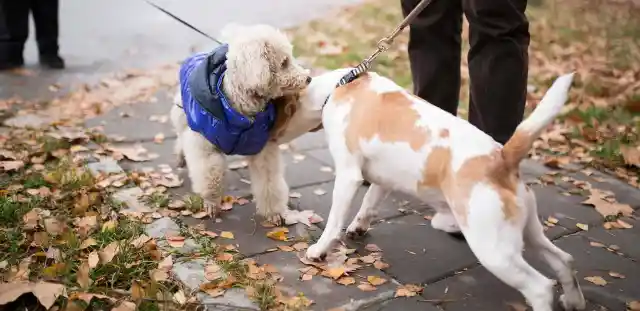
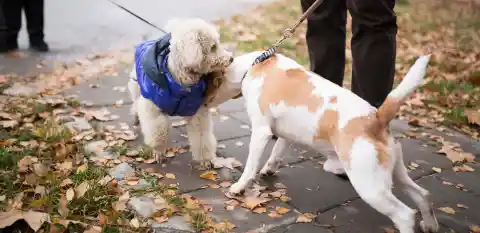
What we can say is that humping in dogs is not just about reproduction, nor is it the sign of a necessarily dominant dog. Humping is seen in dogs of both sexes whether they’re fixed or not. Humping is classified as non-specific arousal in dogs, and it can be triggered by multiple situations or stressors. Female dogs exhibit humping behavior during play, times of stress, when they’re excited, out of boredom, for attention, and out of frustration – it’s a behavior that varies based on context.
Dogs in Vietnam
In a memorial garden not far from Camp Pendleton Naval Hospital, a group of veterans has put up a new monument. It is a tribute to fallen Dawgs, as the handlers call themselves, and their heroic companions. The new spire reflects the veterans’ desire to pay tribute to a segment of service members who usually receive little public attention. Dogs have gone to battle with their human partners since antiquity as scouts, messengers, guards, and trackers.


Sweating in 95-degree heat on a recent day, a crew of veterans and several Marines lifted a 900-pound slab to start erecting the monument. A few dozen bags of concrete later, the memorial is ready to be dedicated. The names of more than 400 dog handlers killed in action since World War I will be read during a dedication ceremony planned for June 7. Another way the Dawgs Project honors dog handlers is through an exhibit featuring a photographic timeline of military working dog teams from World War I through Operation Enduring Freedom.
Dogs Dream
This won’t come as a huge surprise to anyone who has watched their own dog twitching or whimpering in their sleep. Dogs have the same brain wave patterns while they are asleep as humans, so they dream just like we do. Actually, if dogs didn’t dream this would be a much greater surprise given that recent evidence suggests that animals that are simpler and less intelligent than dogs seem to dream.


But what is more surprising is the fact that not all dogs dream the same. Small dogs actually have more dreams than big dogs. For example, a small dog such as a toy poodle may dream once every 10 minutes, whereas a Great Dane may have around an hour between each dream. There may be odd muscle twitches, and you can even see the dog’s eyes moving behind its closed lids if you look closely enough.
Petting a Dog
Recent research on human-dog interactions showed that talking to and petting a dog are accompanied by lower blood pressure in the person than a human conversation. To clarify whether cognition, conditioning, or tactual contact exerted the major influence in this so-called “pet effect,” 60 male and female undergraduates with either positive or neutral attitudes toward dogs interacted with a dog tactually, verbally, and visually while their blood pressure and heart rate were recorded automatically.


Results revealed that: subjects’ blood pressure levels were lowest during dog petting, higher while talking to the dog, and highest while talking to the experimenter and that the subjects’ heart rates were lower while talking or touching the dog and higher while both touching and talking to the dog. Touch appeared to be a major component of the pet effect, while cognitive factors contributed to a lesser degree. Implications for coping with hypertension are discussed, and suggestions for further research are stated.